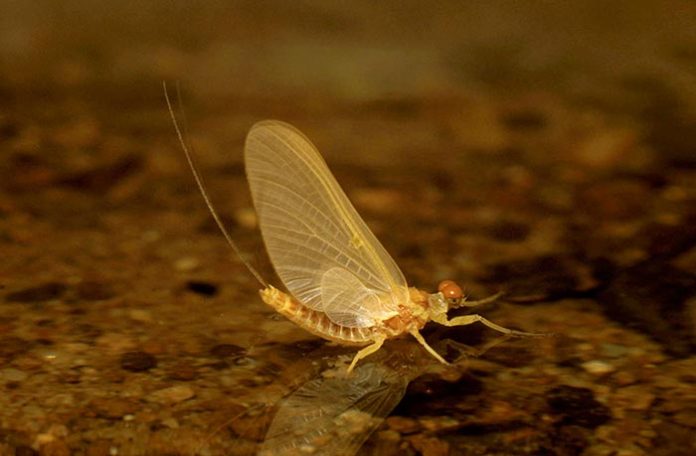Written by: Ted Fauceglia
Photos by Ted Fauceglia
[Editor’s note: For many years, Ted Fauceglia was the country’s foremost photographer of aquatic insects, and he wrote the “Natural Reflections” column in each issue of American Angler. Ted is also an FFI Certified Casting Instructor, the author of Mayflies (2004), and he has provided the bug and fly-pattern photography for dozens of books. He has graciously allowed us to republish some of his columns, and we will be sharing Ted’s incredible images and fly-fishing knowledge every month.]
Freshly hatched duns resting on slow-moving currents are the equivalent of low-hanging fruit. But trout will often follow and scrutinize a perfectly formed natural for several feet before deciding to take or refuse the offering. Odds are that during any mayfly hatch, just as many duns will be refused as will be taken. To make matters worse, the trout’s scrutiny intensifies when an artificial pattern passes through its window.
To maximize any chance of success, properly conceived patterns must incorporate those features of the natural that trout are most likely to key on. Size, colors, and outline are the basic ingredients of any match-the-hatch pattern. But above all, patterns must impart a persuasive image. They should outline a dun’s resting profile and simulate the dun’s imprint on the water’s surface: the looped-wing knotty parachute achieves both.

Looped-Wing Knotty Parachute
Hook: TMC 531*, sizes 20 through 12.
Thread: Yellow or orange, 8/0 or 70 denier.
Wing: Light dun poly yarn looped secured with a four-in-hand knot.
Tails: Light ginger Micro Fibbets.
Abdomen: Sulfur dubbing.
Hackle: Light ginger (maximum 4 wraps).
Thorax: Sulfur dubbing.
Head: Yellow (female) or orange (male), 8/0.
*Note: The TMC 531 is difficult to find in this country, so you can
substitute a TMC 226 BL or a Mustad R30-94833.
Credit: Source link































